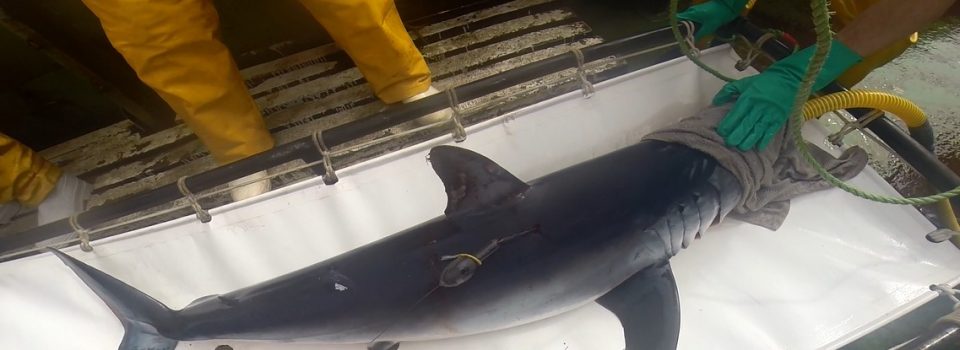IFOP researcher is invited to scientific training in the United States
September 8th, 2016
Vilu shark tour
Dr. Patricia Zarate of Instituto de Fomento Pesquero participated in a training for operating in a more efficient way satellite transmitters utilized in marine animals.
In La Jolla, United States, training workshop organized by the Southwest Fisheries Science Center (NOAA-NMFS) was carried out, for the analysis of satellite data. This workshop was given by Kevin Ng, Matt Rutishauser and Danny Vo, engineers from Wildlife Computers company, leading manufacturers and designers in the world of electronic devices specially used for applied marine animals instrumentation, which generates the algorithms that are the mathematical basis for later transformation of satellite information into data used by scientists.
Patricia Zarate, researcher of IFOP, who attended the training, mentioned the importance of the information provided by satellite transmitters “these transmitters provide information that allows us to understand the behavior of animals in the marine environment, both its horizontal movements and vertical, also, we can know the depth and water temperature they are moving through and where they are (latitude and longitude).”
As mentioned by the researcher, was a very complete workshop “we learned in detail the characteristics and applications of the different types of transmitters, such as to program and analyze the information.” Wildlife Computers engineers taught us the utilization of softwares to link the movement of the animal with oceanographic parameters, such as, marine productivity, temperature, etc. Also, they presented us the wide range of transmitters that have been developed, many of which are applicable to any organism and ecosystem.
Dr. Zarate explained that this training is crucial for the analysis of satellite data. She mentioned that to date, the Instituto de Fomento Pesquero has installed 8 satellite transmitters in mako sharks and marrajo shark, and from these, 7 have successfully transmitted the information. Some of the sharks, like the marrajo female, denominated as Vilu, show a displacement of approximately 3000 km between Antofagasta and Chepu (Chiloé) over a period of approximately 4 months. We also know now that this shark can reach 220 meters deep.
Finally Dr. Zarate added that this training workshop was specifically made for Chilean scientists under the framework of an existing agreement between the Government of Chile and the United States. We also had another training with researchers of Big Pelagic Program, led by Dr. Suzanne Kohin, there we could see the application of this information regarding fisheries. When one knows and understands the behavior of sharks in the marine environment, it is possible to predict the impact or interaction within fishing world. This is particularly important to develop an effective management of fisheries resources and their ecosystem.
